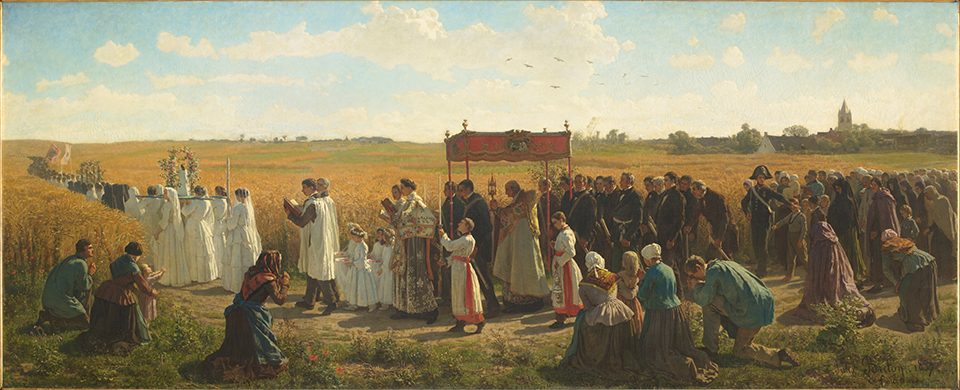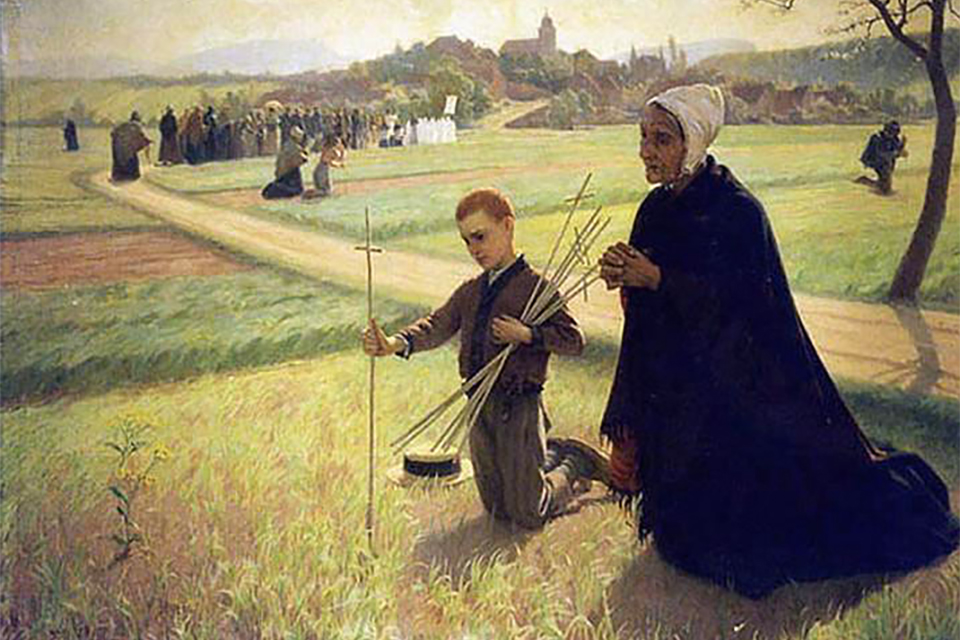Rogationtide was an early medieval ritual invented in the 5th century to perform the communal character of the Christian congregation. The obligatory participation literally conformed the congregation by staging three days of processions and communal fasts leading up to the feast on the day of Christ’s ascension.
In the 5th century, bishop Mamertus of Vienne invented the Rogation processions, traditionally held on Monday to Wednesday, preceding Christ’s Ascension’s feast day. Customarily, they were observed with processions, litanies and fasting while people went around beating the bounds and petitioning for good weather, abundant crops and deliverance from famine and plagues.
We know of Mamertus from the letters of Sidonius (Epist. V, XIV and VII, I) and the writings of his successor, Avitus, from whose hand we possess a Homilia de Rogationibus (P.L. LIX, 289-94). Sidonius introduced the tradition to Clermont in AD 473, and it is generally believed that the invention of tradition by Mamertus was somewhat earlier. Apart from the sermon from the hand of Avitus, we also possess several early sermons from Caesarius. According to Avitus, the Rogation Days were undertaken to petition for solace from “frequent fires, continuous earthquakes, nocturnal sounds”. Also, he preaches how wild animals sought out food among people living in cities. Were these events “optical illusions or portends”?, he asks, outlining the harshness of the ritual of the Rogation Days, which his sermon was intended to introduce.
Generally, Rogations Days were believed to be invented as a communal act intended to bolster the fragile and persecuted gallic communities living through turmoil characterising the founding of the Frankish, Visigothic and Burgundian successor kingdoms in the 5th century. Later, these calamities were embroidered upon by chroniclers like Honorius, who in the 12th century told how thunderstorms, fires, droughts, plagues, and pestilences were followed by wild beasts devouring men, women and children, leading to all sorts of calamities.
One of the characteristic features of the new festival and its liturgies was the swiftness with which it spread across the Early Medieval World as a mandatory ritual to be performed to the letter. As a result, Rogationtide soon became the essential feast after Easter in Francia and Anglo-Saxon England. As such, it was a mandatory public performance through which the participants of a local church community came together to enact their sense of communal place and collective, the Christian Commonwealth (Ristuccia 2017).
It is a myth that the enactors literally beat the bounds of the parish, thus delineating a geographical space. However, it did delineate the boundaries of the local community. In this sense, it demarcated the common lands, the pastures and further out the wilderness peopled by “the others”.

SOURCE:
Christianization and Commonwealth in Early Medieval Europe: A Ritual Interpretation
By Nathan J. Ristuccia
Oxford University Press, 2018


